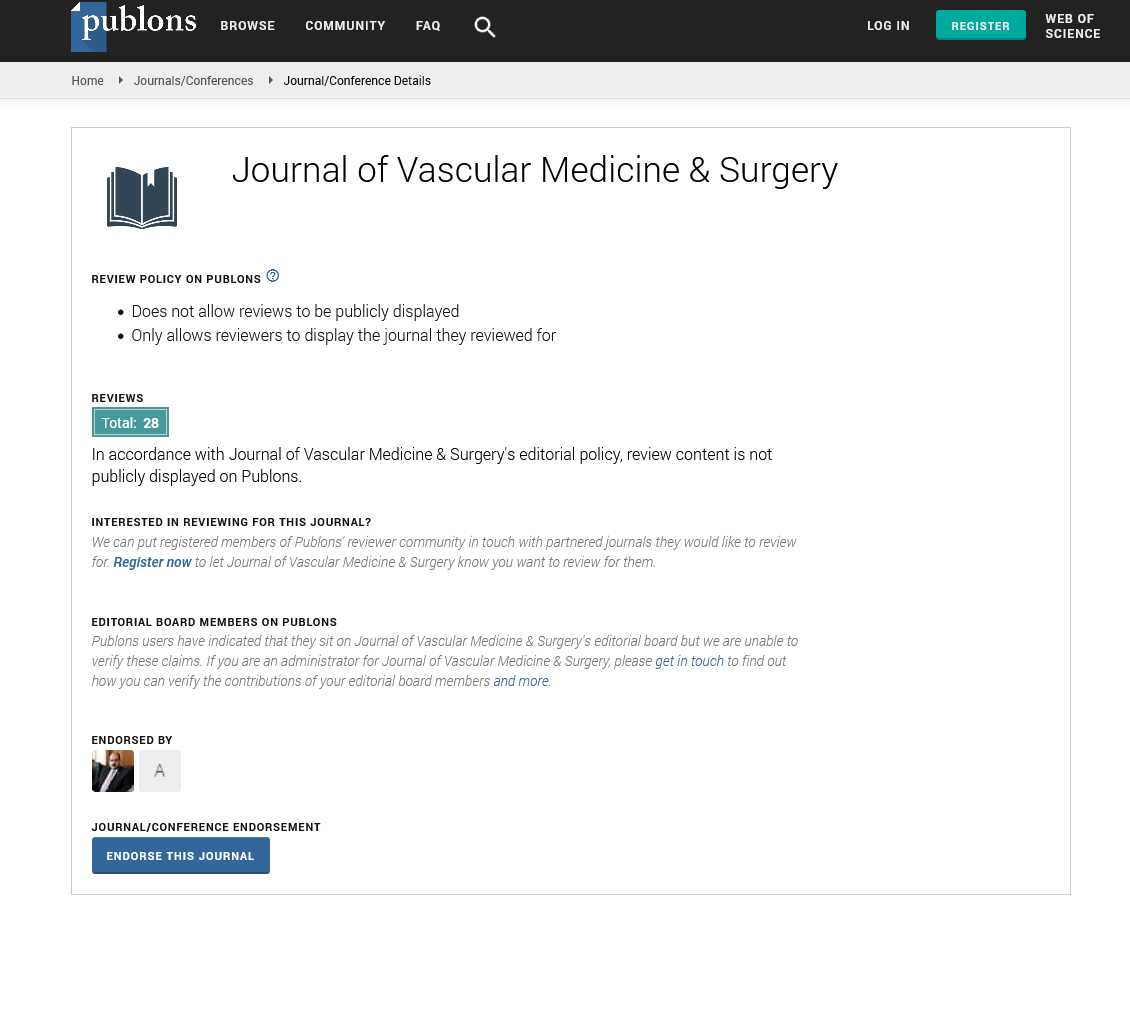Indexed In
- Open J Gate
- Academic Keys
- RefSeek
- Hamdard University
- EBSCO A-Z
- OCLC- WorldCat
- Publons
- Euro Pub
- Google Scholar
- SHERPA ROMEO
Useful Links
Share This Page
Journal Flyer

Open Access Journals
- Agri and Aquaculture
- Biochemistry
- Bioinformatics & Systems Biology
- Business & Management
- Chemistry
- Clinical Sciences
- Engineering
- Food & Nutrition
- General Science
- Genetics & Molecular Biology
- Immunology & Microbiology
- Medical Sciences
- Neuroscience & Psychology
- Nursing & Health Care
- Pharmaceutical Sciences
Commentary Article - (2024) Volume 0, Issue 0
Cardiomyopathy: Identifying and Managing Heart Muscle Disease
Gregg Isaacs*Received: 25-Sep-2024, Manuscript No. JVMS-24-27624; Editor assigned: 27-Sep-2024, Pre QC No. JVMS-24-27624 (PQ); Reviewed: 11-Oct-2024, QC No. JVMS-24-27624; Revised: 18-Oct-2024, Manuscript No. JVMS-24-27624 (R); Published: 28-Oct-2024, DOI: 10.35248/2329-6925.24.S24.559
Description
Cardiomyopathy refers to a group of diseases that affect the heart muscle (myocardium), impairing its ability to circulate blood effectively to the rest of the body. Cardiomyopathy, as compared to coronary artery disease or valvular heart disease, mainly impacts muscle tissue, resulting in structural and functional difficulties.
Types of cardiomyopathy
Cardiomyopathy is generally categorized into four main types, each with distinct features:
Dilated Cardiomyopathy (DCM): The cardiopulmonary ventricles develop and reduce strength, resulting in reduced circulation capacity. Common causes include genetic mutations, infections, alcohol abuse and exposure to toxins. DCM is the most common form of cardiomyopathy, affecting of middle age people and more frequently men.
Hypertrophic Cardiomyopathy (HCM): The heart muscle develops, especially in the ventricles, establishing it difficult for the heart to circulate blood. Mutations in cartilage proteins are the most prevalent causes. HCM is the main cause of sudden cardiac mortality among young athletes.
Restrictive Cardiomyopathy (RCM): The heart muscle becomes harder reducing its ability to fill with blood between heartbeats. Frequently associated with a condition known as sarcoidosis or radiation therapy. RCM is the least common type but it can occur in people of all ages.
Arrhythmogenic Right Ventricular Cardiomyopathy (ARVC): Fat and fibrous tissue replace the muscle in the right ventricle, leading to arrhythmias and reduced circulating efficiency. Genetic mutations in desmosomal proteins are the primary cause. More common in young adults and it frequently associated with traumatic cardiac death.
Causes and risk factors
Cardiomyopathy can be inherited (genetic) or acquired due to environmental or lifestyle factors. These causes are frequently common in the different categories. Mutations in genes that produce heart muscle proteins. Infectious myocarditis can cause a dilated cardiomyopathy. Chronic alcohol abuse or exposure to certain chemotherapy drugs can weaken the heart muscle. Conditions such as diabetes, thyroid disease or adrenal gland disorders. Lupus and rheumatoid arthritis can damage the heart. Peripartum cardiomyopathy affects some women late in pregnancy after the delivery.
Symptoms of cardiomyopathy
The symptoms of cardiomyopathy change according to the type and severity of the illness. Some individuals may remain asymptomatic in the early stages, while others may experience significant signs. Because of the heart's decreased ability to circulate blood properly. Fluid accumulation usually occurs in the legs, ankles, feet or abdomen. Particularly during physical activity or due to reduced blood flow. Palpitations, irregular heartbeats or episodes of fainting (syncope). Resulting from reduced cardiac output.
Complications of cardiomyopathy
Cardiomyopathy can lead to severe complications. The heart’s inability to pump blood effectively results in fluid accumulation in the lungs and other tissues. Electrical disturbances in the heart can cause sudden death, particularly in HCM and ARVC. Blood clots can develop in the heart due to blood flow, increasing the risk of a stroke. Dysfunctional heart valves due to changes in the heart’s structure.
Diagnosis of cardiomyopathy
Cardiomyopathy is diagnosed by using a combination of medical history, physical examination, imaging scans and specialized testing. Evaluating symptoms, family history and risk factors.
Checking for signs such as abnormal heart sounds, fluid retention or low blood pressure. Ultrasound imaging to assess heart size, structure and function. Measures electrical activity to detect arrhythmias or abnormalities. Provides detailed images of heart tissue, useful in diagnosing identifying fibrosis. Identifies heart enlargement or pulmonary congestion. Evaluates heart function under physical exertion. Helps to identify inherited forms of cardiomyopathy.
Citation: Isaacs G (2024). Cardiomyopathy: Identifying and Managing Heart Muscle Diseases. J Vasc Surg. S24:559.
Copyright: © 2024 Isaacs G. This is an open access article distributed under the terms of the Creative Commons Attribution License, which permits unrestricted use, distribution and reproduction in any medium, provided the original author and source are credited.

